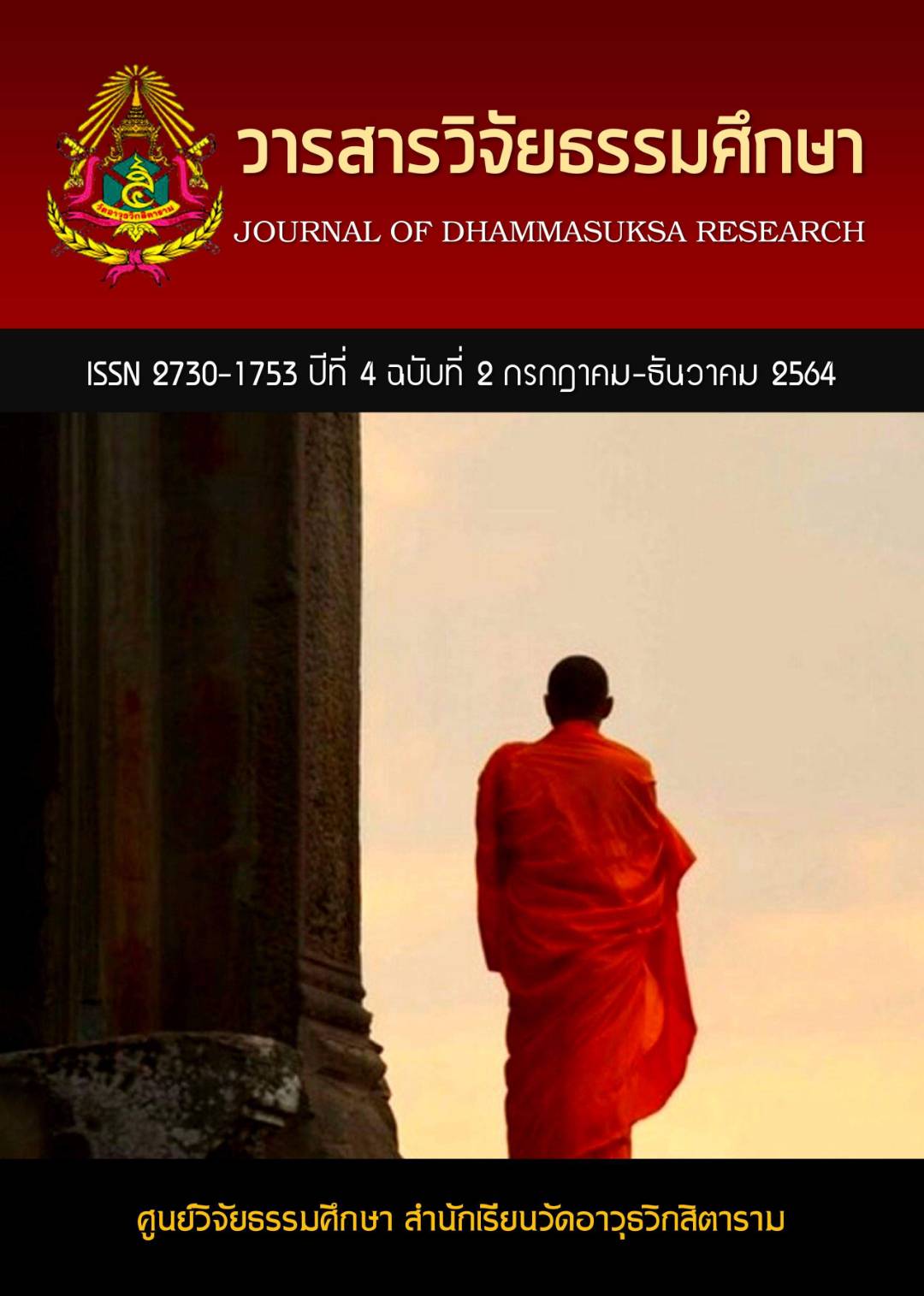การศึกษาเปรียบเทียบแนวคิดเรื่องอาตมันและพรหมันในคัมภีร์อุปนิษัท
คำสำคัญ:
อาตมัน, พรหมัน, อุปนิษัทบทคัดย่อ
บทความนี้มีวัตถุประสงค์เพื่อ 1) ศึกษาความหมายและแนวคิดเรื่องอาตมันและพรหมันในคัมภีร์อุปนิษัท 2) ศึกษาเปรียบเทียบให้เห็นแนวคิดเรื่องอาตมันและพรหมันในคัมภีร์อุปนิษัท จากการศึกษาพบว่า แนวคิดเรื่องอาตมันและพรหมันในคัมภีร์อุปนิษัทมีจำนวนมาก มีผู้แต่งหลายคนตามลำดับ ไม่ระบุเวลาที่แน่ชัด แต่มีจุดหมายหลักคือการสอนให้รู้เกี่ยวกับหลักการว่าด้วยอาตมันและพรหมันเพื่อแสวงหาความจริงอันประเสริฐสุดที่สามารถนําตนไปสู่นิรวาณหรือโมกษะได้ ด้านความคล้ายกันคืออาตมันและพรหมันเป็นเรื่องเดียวกัน เป็นสิ่งสัมบูรณ์เดียวกัน หรือเป็นความจริงสูงสุดหรืออันติมสัจจะอันเดียวกัน อาตมันเป็นส่วนย่อยอันแยกมาจากพรหมัน โดยที่แท้ก็เป็นอย่างเดียวกัน ด้านความต่างกันคืออาตมันก็คือวิญญาณตรงกับในภาษาไทยว่า ใจ เป็นส่วนซึ่งควบคุมร่างกายและอวัยวะต่าง ๆ ไม่รู้เกิด ไม่รู้ดับ ไม่มีอิสระ มีอยู่ในสิ่งทั้งปวงที่มีลมหายใจเข้าและออก (ปฺราณ) ประกอบกรรม (กรฺม) ตามลําพังไม่ได้ ต้องอาศัยปรมาตมันบังคับให้ทํา เมื่อตาย อาตมันก็ออกจากโครงสรีระนี้ไปสู่พรหมันและเพื่อสืบชาติต่อไปเพราะไม่รู้แจ้งความจริง ส่วนพรหมันจะทรงอานุภาพบันดาลให้สกลโลกนี้มีขึ้น ดําเนินไปและสลายไป ทั้งเป็นธรรมชาติและผู้สร้างธรรมชาติ เป็นสิ่งที่แท้จริงสูงสุด และมีฐานะเป็นพระเจ้าของสรรพสิ่งที่มีอยู่ในโลก เป็นสิ่งที่ทุกอย่างมีอยู่ในโลก ในขณะเดียวกันก็เป็นสิ่งที่อยู่เหนือจักรวาล ไม่สามารถจะพรรณนาได้ว่ามีรูปร่าง ลักษณะเป็นเช่นไร ตั้งอยู่ที่ไหน ครั้นถึงเบื้องปลายของสิ่งทั้งปวง ทุกสิ่งก็สลายลงสู่พรหมัน
References
จำนงค์ ทองประเสริฐ. (2514). บ่อเกิดและลัทธิประเพณีอินเดีย. พระนคร : ราชบัณฑิตยสถาน.
จำนงค์ ทองประเสริฐ. (2539). ปรัชญาประยุกต์ ชุดอินเดีย. (พิมพ์ครั้งที่ 2). กรุงเทพฯ : เอช เอ็น กรุ๊ฟ จำกัด.
ทองหล่อ วงษ์ธรรมา. (2535). ปรัชญาอินเดีย. (พิมพ์ครั้งที่ 2). กรุงเทพฯ : โอเดียนส์โตร์.
ทองหล่อ วงษ์ธรรมา. (2536). ปรัชญาตะวันออก. กรุงเทพฯ : โอเดียนสโตร์.
นวนิต ประถมบูรณ์. (2520). ทรรษนะเรื่องการหลุดพ้นในปรัชญาอินเดีย. วิทยานิพนธ์อักษรศาสตรมหาบัณฑิต บัณฑิตวิทยาลัย จุฬาลงกรณมหาวิทยาลัย.
ฟื้น ดอกบัว. (2545). ปวงปรัชญาอินเดีย. กรุงเทพฯ : ศยาม.
ฟื้น ดอกบัว. (2555). ปวงปรัชญาอินเดีย. (พิมพ์ครั้งที่ 2). กรุงเทพฯ : สยามปริทัศน์.
วิมลศิริ ร่วมสุข. (2522). ประวัติวรรณคดีสันสกฤตยุคพระเวท. กรุงเทพฯ : สำนักพิมพ์สหสยามพัฒนา.
สถิต วงศ์สวรรค์. (2537). ปรัชญาตะวันออก. กรุงเทพฯ : อมรการพิมพ์.
สมัคร บุราวาศ. (2545). วิชาปรัชญา. กรุงเทพฯ : ศยาม.
สมัคร บุราวาศ. (2554). ปรัชญาพราหมณ์ในสมัยพุทธกาล. กรุงเทพฯ: ศยาม.
สุนทร ณ รังษี. (2530). ปรัชญาอินเดีย : ประวัติและลัทธิ. พระนคร : จุฬาลงกรณมหาวิทยาลัย.
สมบัติ มั่งมีสุขศิริ. (2561). สรุปประวัติเนื้อหาของมาณฑูกยะอุปนิษัท. เอกสารประกอบการเรียนการสอน ภาควิชาสันสกฤตศึกษา คณะโบราณคดี มหาวิทยาลัยศิลปากร.
Chandradhar Sharma. (1964). A Criticall Survey of Indian philosophy. Varanasi: Motilal Banarsidass.
Jadunath Sinha. (1963). Outlines of Indian Philosophy. Calcutta: Sinha Publishing House, Private Limited.
S.Radhakrishnan. (1953). The Principal Upanisads. London: George Allen & Unwin Ltd.
S.Radhakrishnan. (1994). The Principal Upanisads. Delhi: Gopsons Papers.

Downloads
เผยแพร่แล้ว
How to Cite
ฉบับ
บท
License

This work is licensed under a Creative Commons Attribution-NonCommercial-NoDerivatives 4.0 International License.

